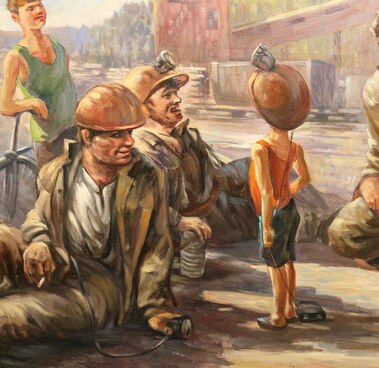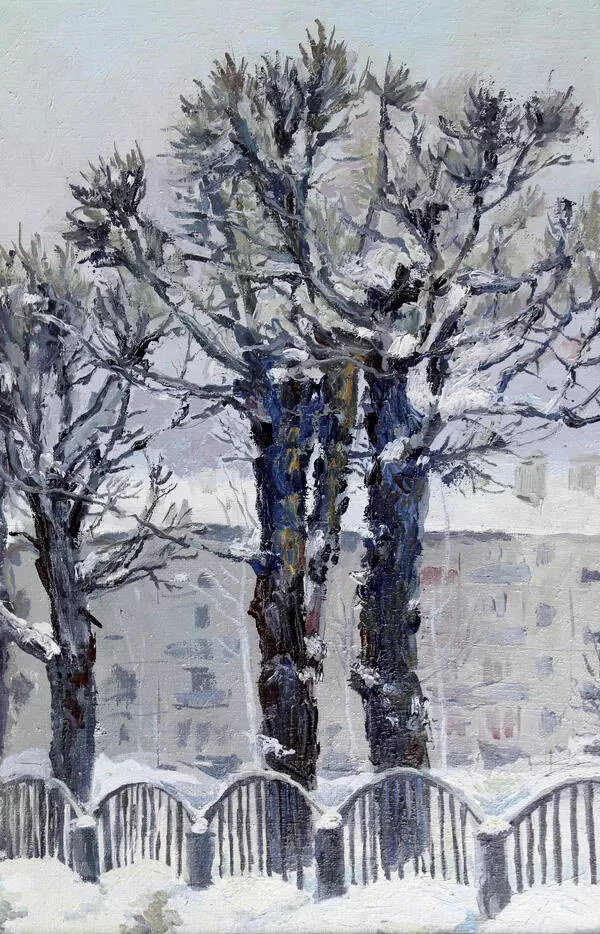Svetlana Genrikhovna Shpedt is a professional artist. She was born in the Republic of Khakassia, but has spent most of her life in the city of Mezhdurechensk, in the Kuzbass region. She graduated from the graphic arts faculty of Novosibirsk State Pedagogical University. She taught in the School of Art, and School of
Painting. Landscape painting is her favorite genre. Her paintings depict the natural beauty of two regions dear to her, Mountain Shoria and the Republic of Khakassia. She paints in oils, watercolor and gouache. Her paintings are characterized by a graceful technique and a masterful control of color, in which different tones are harmoniously combined. In her works she recreates the rich palette of the natural landscape around her. Viewers are attracted by the rich colors in her paintings. However, when Svetlana Shpedt is admiring some beautiful effect of light, color or form in the world around her, Svetlana Shpedt does not rush to commit it to canvas: Before picking up my brushes, I always set myself a goal: ‘I think for a while, go for a walk, look around me and decide what I want to reveal, show or emphasize in this painting. I aim to create not simply a study, but a work of art…’
Svetlana Shpedt has painted a series of pictures that celebrate the city in which she grew up. In her painting Old Mezhdurechensk she depicts a group of two-floor wooden buildings in an eastern district of the city. These weathered old huts are mute witnesses to the city’s past.
They have seen much in their time, and have a great deal to say about people’s lives. They have been home to several generations of residents, and these old walls still hold memories of those who lived here. Each of these huts has its own history, and conducts a silent dialogue with the viewer. Each is a guardian of secrets and memories.
The artist has deliberately uses a distorted perspective to emphasize the fragility of these old buildings. The broken lines convey an atmosphere of instability, and the passage of time, which lays all things low. The uneven texture of the painting emphasizes the age of these wooden buildings. They appear to be disintegrating as we look on. The area formed by several intersecting washing lines is of particular significance. These huts appear to have been severed from the rest of the world. They lead their own lives, in their own self-contained space. The dynamic and stylized old streets seem to suggest that this world is little by little becoming a thing of the past, and is doomed to collapse.
Painting. Landscape painting is her favorite genre. Her paintings depict the natural beauty of two regions dear to her, Mountain Shoria and the Republic of Khakassia. She paints in oils, watercolor and gouache. Her paintings are characterized by a graceful technique and a masterful control of color, in which different tones are harmoniously combined. In her works she recreates the rich palette of the natural landscape around her. Viewers are attracted by the rich colors in her paintings. However, when Svetlana Shpedt is admiring some beautiful effect of light, color or form in the world around her, Svetlana Shpedt does not rush to commit it to canvas: Before picking up my brushes, I always set myself a goal: ‘I think for a while, go for a walk, look around me and decide what I want to reveal, show or emphasize in this painting. I aim to create not simply a study, but a work of art…’
Svetlana Shpedt has painted a series of pictures that celebrate the city in which she grew up. In her painting Old Mezhdurechensk she depicts a group of two-floor wooden buildings in an eastern district of the city. These weathered old huts are mute witnesses to the city’s past.
They have seen much in their time, and have a great deal to say about people’s lives. They have been home to several generations of residents, and these old walls still hold memories of those who lived here. Each of these huts has its own history, and conducts a silent dialogue with the viewer. Each is a guardian of secrets and memories.
The artist has deliberately uses a distorted perspective to emphasize the fragility of these old buildings. The broken lines convey an atmosphere of instability, and the passage of time, which lays all things low. The uneven texture of the painting emphasizes the age of these wooden buildings. They appear to be disintegrating as we look on. The area formed by several intersecting washing lines is of particular significance. These huts appear to have been severed from the rest of the world. They lead their own lives, in their own self-contained space. The dynamic and stylized old streets seem to suggest that this world is little by little becoming a thing of the past, and is doomed to collapse.




